Revisiting a Favorite: Sitka, Alaska
We haven’t been to a repeat port of call since we stopped at Valparaiso, Chile, on February 16th. But today, we revisited a port we last explored in 2018—and the small town of Sitka didn’t disappoint!
Sitka was originally a Tlingit village named “Shee Atika,” meaning “Outside of Baranof Island.” Russian fur traders settled the area in 1799 and renamed it New Archangel. Sitka was the historic center of Russia’s Alaskan empire until the United States purchased the Alaska territory in 1867. Sitka is known today for its fishing industry, many historic attractions, and popularity as a cruise port.
Since we visited Sitka in 2018 with our daughter, Amanda, and her friend, Kristi, we knew our way around the small, walkable town. A new cruise port had us docking several miles from the town’s center, but a convenient shuttle bus ran continuously and dropped us off a block from the main shopping streets.
We stopped in several art galleries and made a few purchases, including a set of incredible Matryoshka dolls at the Russian American Store. I wish I’d taken a photo of the dolls, which feature paintings of the folk story “The Frog Princess” signed by the Russian artist Igor Kolbasuk and handcrafted in St. Petersburg. However, I was distracted by the shop’s offer to ship them home and forgot! (I’ll share a photo in a few weeks!)
We also bought a few gifts at the Sitka Rose Gallery and admired the blooming rose hedge along its sidewalk.
Since we didn’t sign up for a Regent excursion—we wanted to explore at our own pace—we walked everywhere. Of course, the weather was typical of late spring, so it rained much of the day. We explored the coast before entering the Sitka National Historic Park’s Visitor Center.
We were geared up! With raincoats, Norwegian rain pants, umbrellas, and the camera backpack’s protective rain cover, we mainly stayed dry as we logged over 5 miles walking on sidewalks, trails, and the coast.
We remembered scouring the coast near the historic park and enjoying all the creatures we discovered in the tidal pools, including sea stars. This year, we walked the shore at low tide but found only kelp and empty shells.
We then backtracked a bit and entered the Visitor Center area from the parking lot. The exhibit areas were filled with tour groups, so we ducked out the back door and went for the forest walk to see the totem poles and rainforest first.
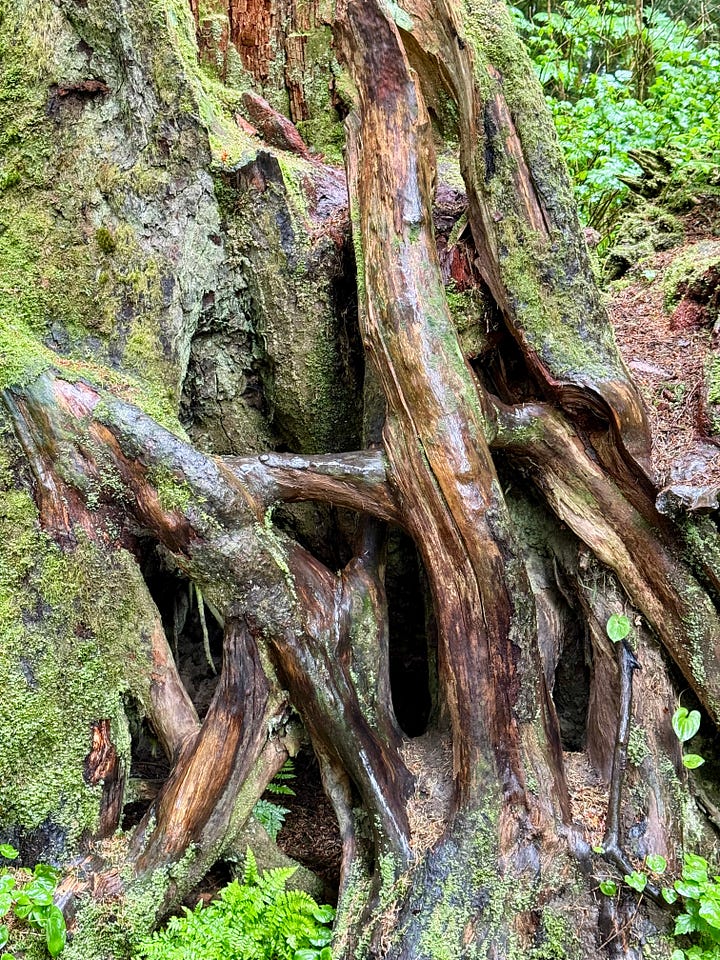

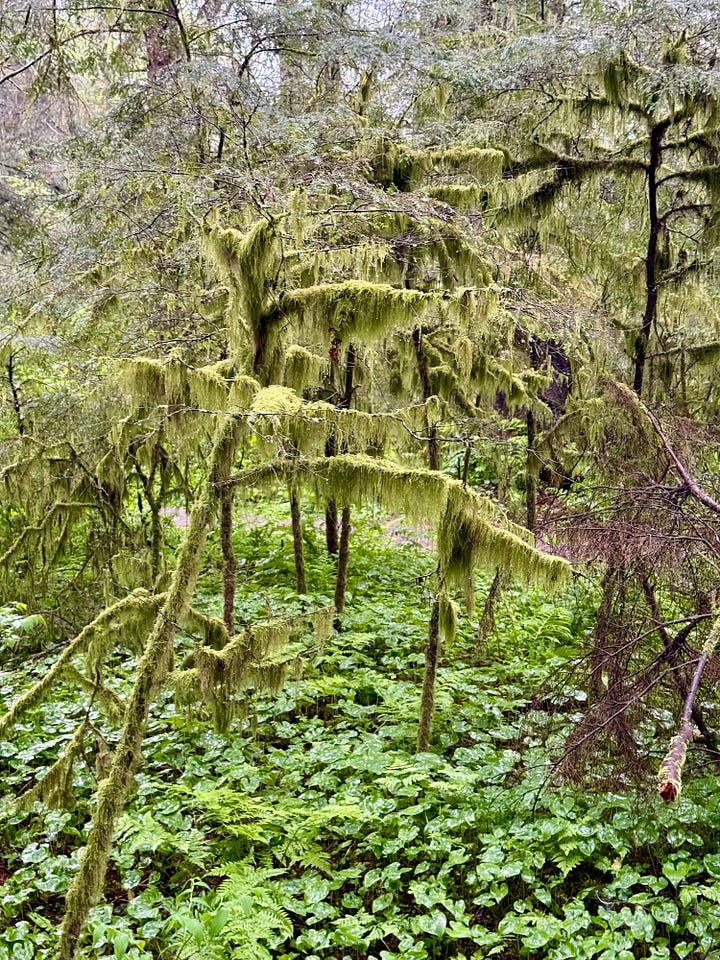
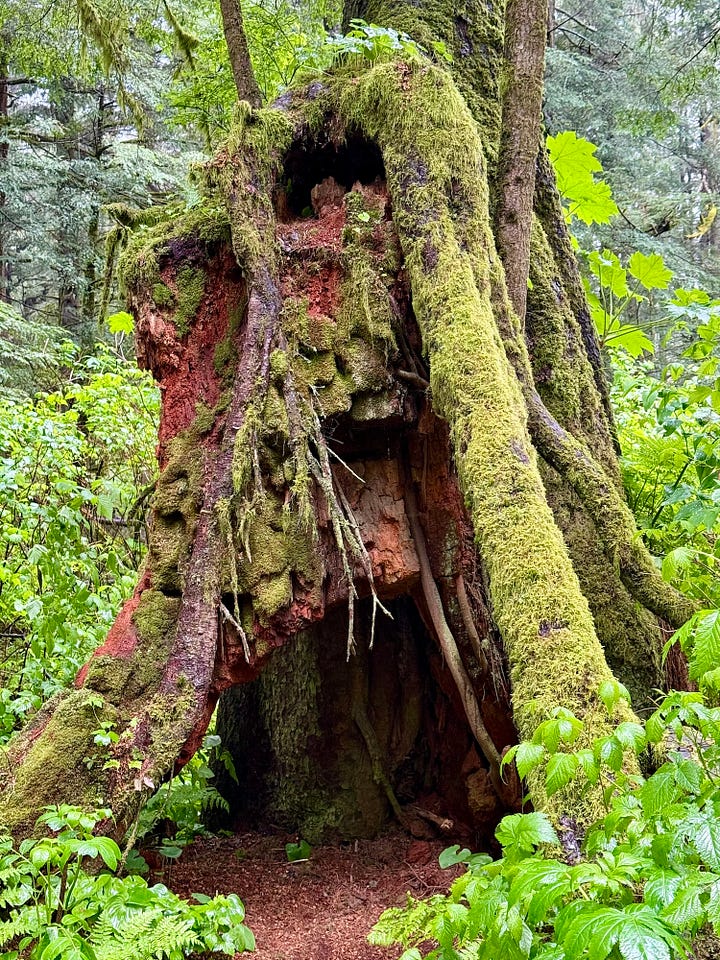
This totem pole is Yaadaas Crest Corner Pole—Second Twin, a 1982 recreation of a crest pole depicting the heraldic emblems of the Yaadaas clan of Kaigani Haida. This type of pole, usually 20-40 feet tall, is the most decorative of all the totems and would have been placed outside the home. Its carvings tell the story of the family, clan, or village that owned it.
We followed the forest trail and crossed the bridge over the flowing Indian River, the primary river in Sitka, Alaska. We spotted some birds—a half-dozen Bald eagles, Pacific wrens, Western flycatchers, Golden-crowned Kinglets, and two new-to-us species—Townsend Warblers, and male and female Barrow’s Goldeneye ducks.
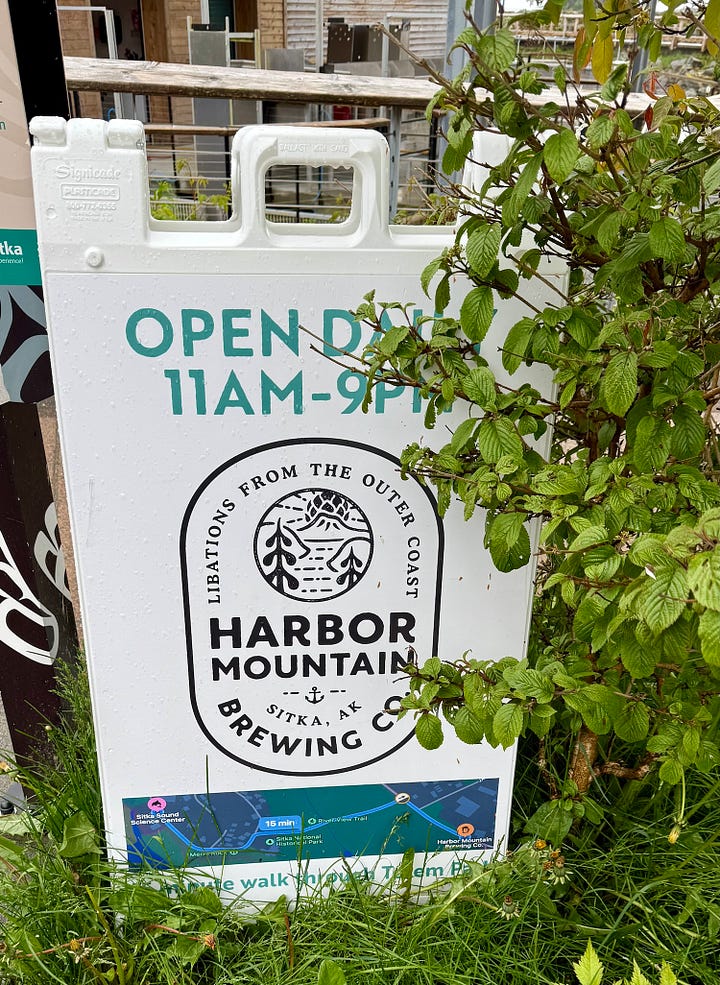
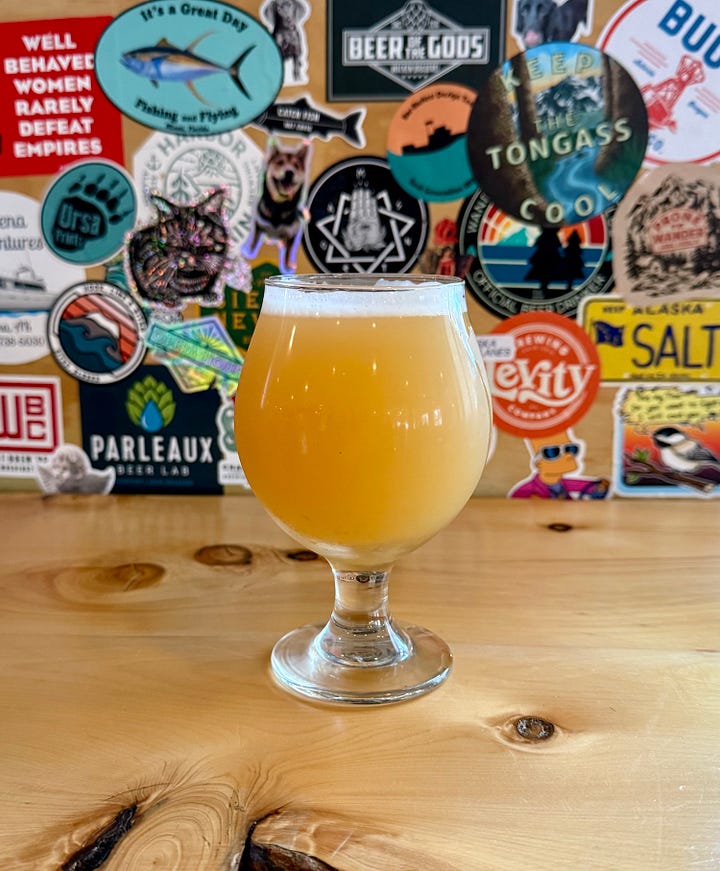
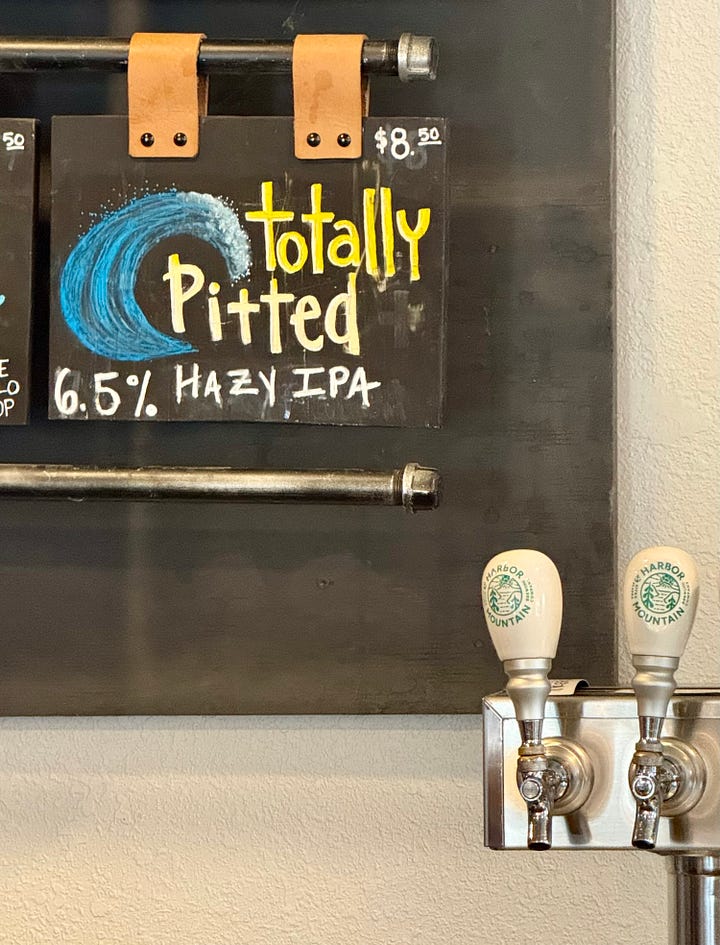
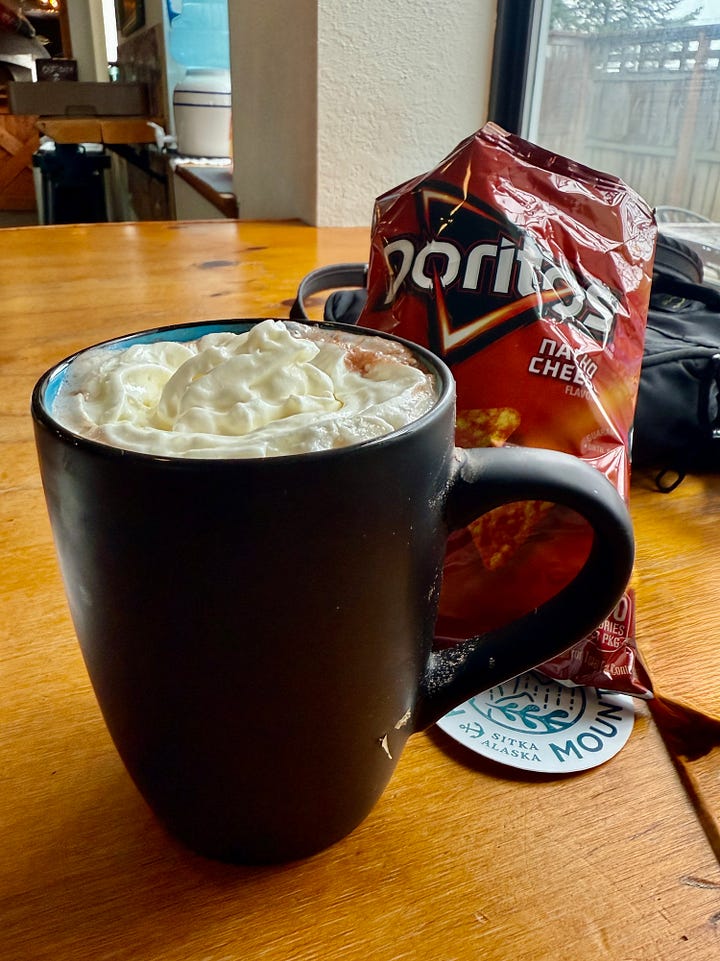
We were on our way to the Raptor Center to check out the rehab bird facility when we got sidetracked by a sign that read, “Harbor Mountain Brewing Co. Open Daily 11 AM to 9 PM” with an arrow pointing “this-a-way”. Earlier, we had discussed walking to this local brewery, but then decided against it, as it was longer than we desired, especially in the rain. But then again, it was raining harder, and maybe we deserved to rest for a while in a warm, dry place? And if that place served beer and lunch? We agreed it was a good change of plans. Unfortunately, while the beer was flowing when we arrived, the pizza place was closed. No worries. We had Doritos and Fritos for lunch, plus beer and hot chocolate.
Sherpa enjoyed a Totally Pitted Hazy IPA brewed by Harbor Mountain Brewing Co. in Sitka, Alaska. ABV: 6.5%. Sherpa’s Take: “The beer is a hazy Dorito-gold color with medium carbonation and a citrusy hops aroma. The initial taste is smoother than expected for an IPA, but becomes pleasantly bitter at the back of the mouth. The beer has good legs in the glass, to use a wine term. As it warms, the aroma and taste of the hops grow, providing a nice pop to the taste buds to finish. Hard as it might be, I’d let the beer stand about 5 minutes before drinking. Let it warm a bit. 7/10”
After our brewery stop, we retraced our steps through the forest, across the bridge, and to the Visitor Center. This time, it was less crowded, so we took our time studying all the exhibits and watching the short movie about Sitka and its diverse inhabitants—Tlingit, Russian, and American.
The Bishop’s House was halfway between the historical park and the shuttle bus stop—another good place to visit and escape the rain. We walked through the first floor of the Bishop’s House—all new-to-us exhibits about the Tlingit, the history of the Russian Orthodox church in Sitka, and stories of the orphanage and school in the 1800s.
We stopped in the Episcopal Church for another brief visit: simple lines, simple style, but a cozy and inviting church space.
Before walking to the shuttle bus, our last stop was at St. Michael’s Russian Orthodox Cathedral; we enjoyed exploring its history, art, and architecture. The cathedral is a National Historic Landmark and an exact reconstruction of the original building, which burned down in 1966. It is filled with beautiful icons.
We remember visiting in 2018 and made an effort to return to see the exquisite iconography. The volunteers who open the church to visitors are always so welcoming and friendly.
We pulled out of Sitka around 4 PM, amidst a bit of sunshine. We enjoyed our second visit to Sitka and could happily return to visit the art galleries, stroll the streets, and explore the trails, exhibits, and wildlife at Sitka National Historic Park again.
Next port of call: Klawock, Alaska

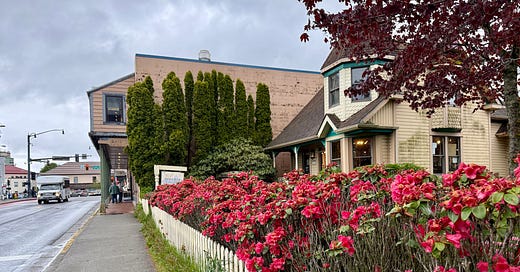


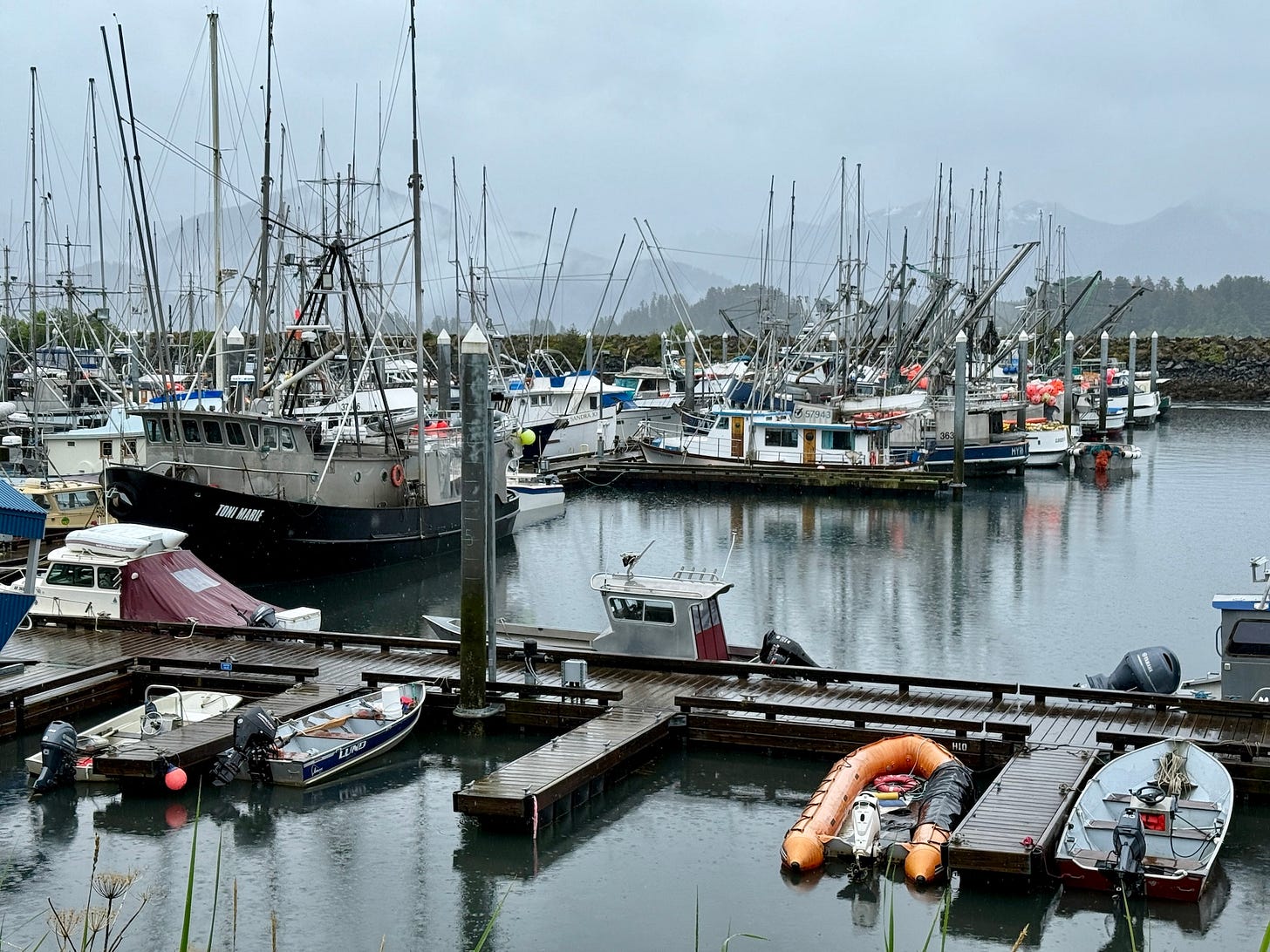

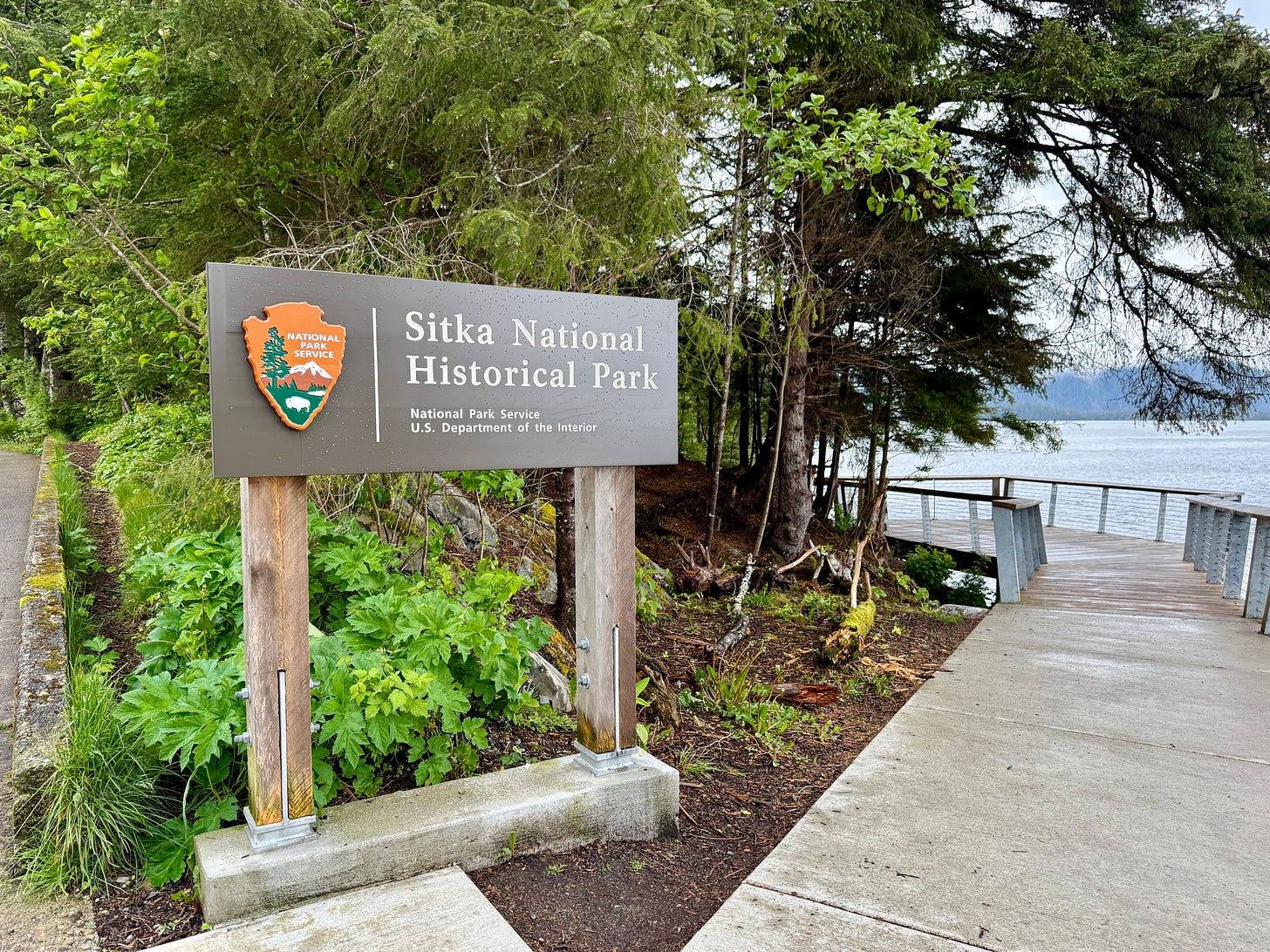
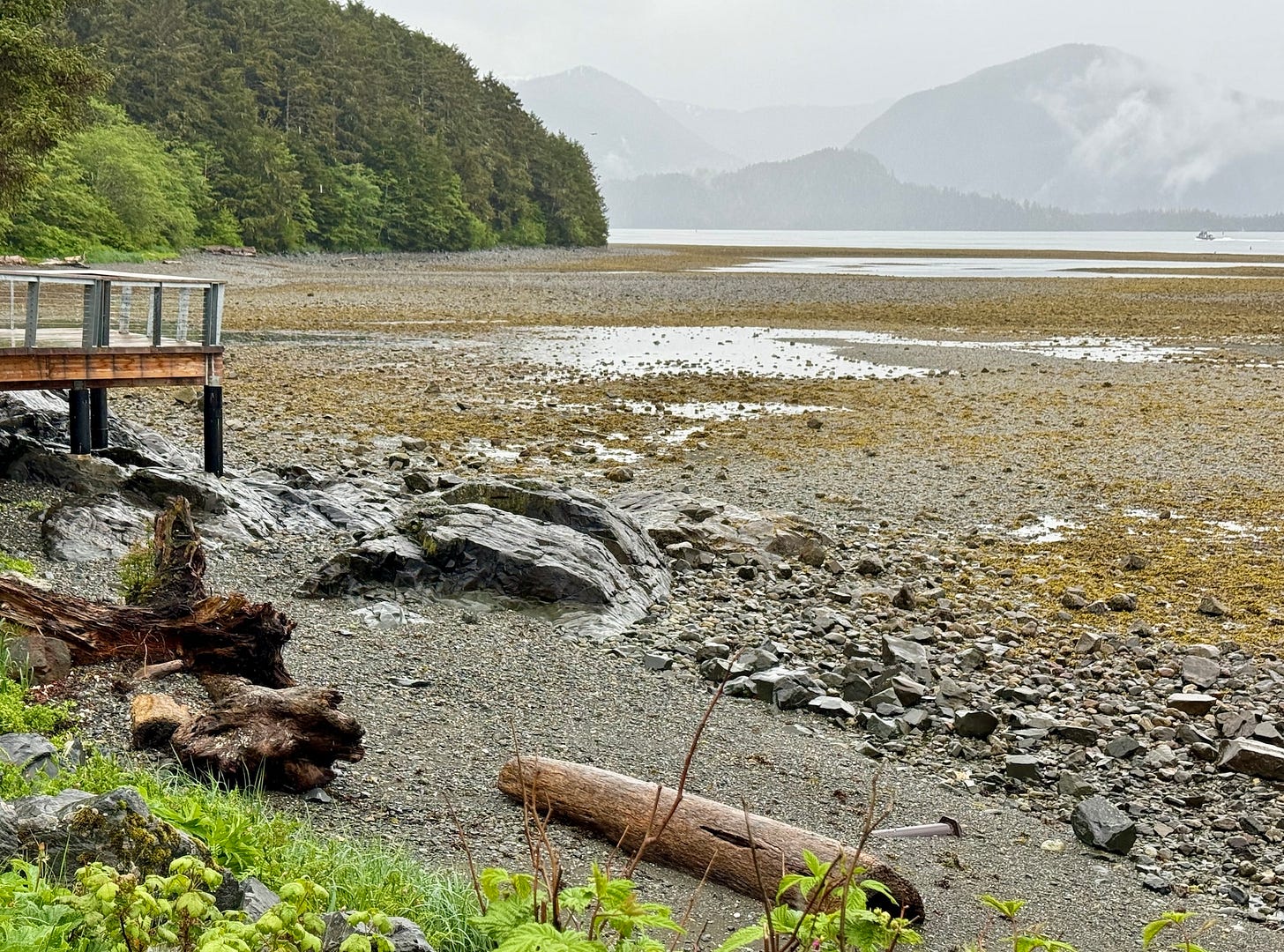
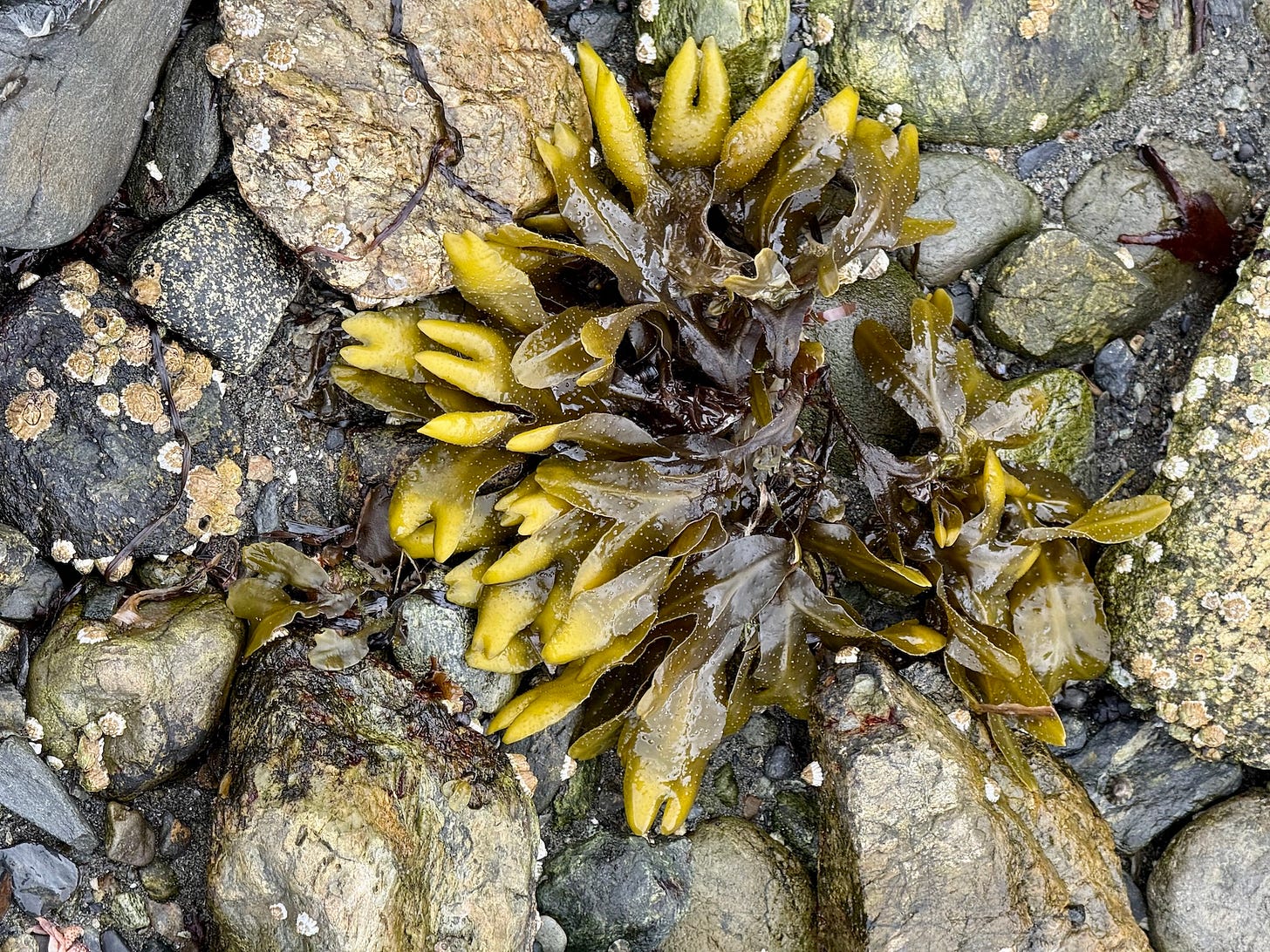
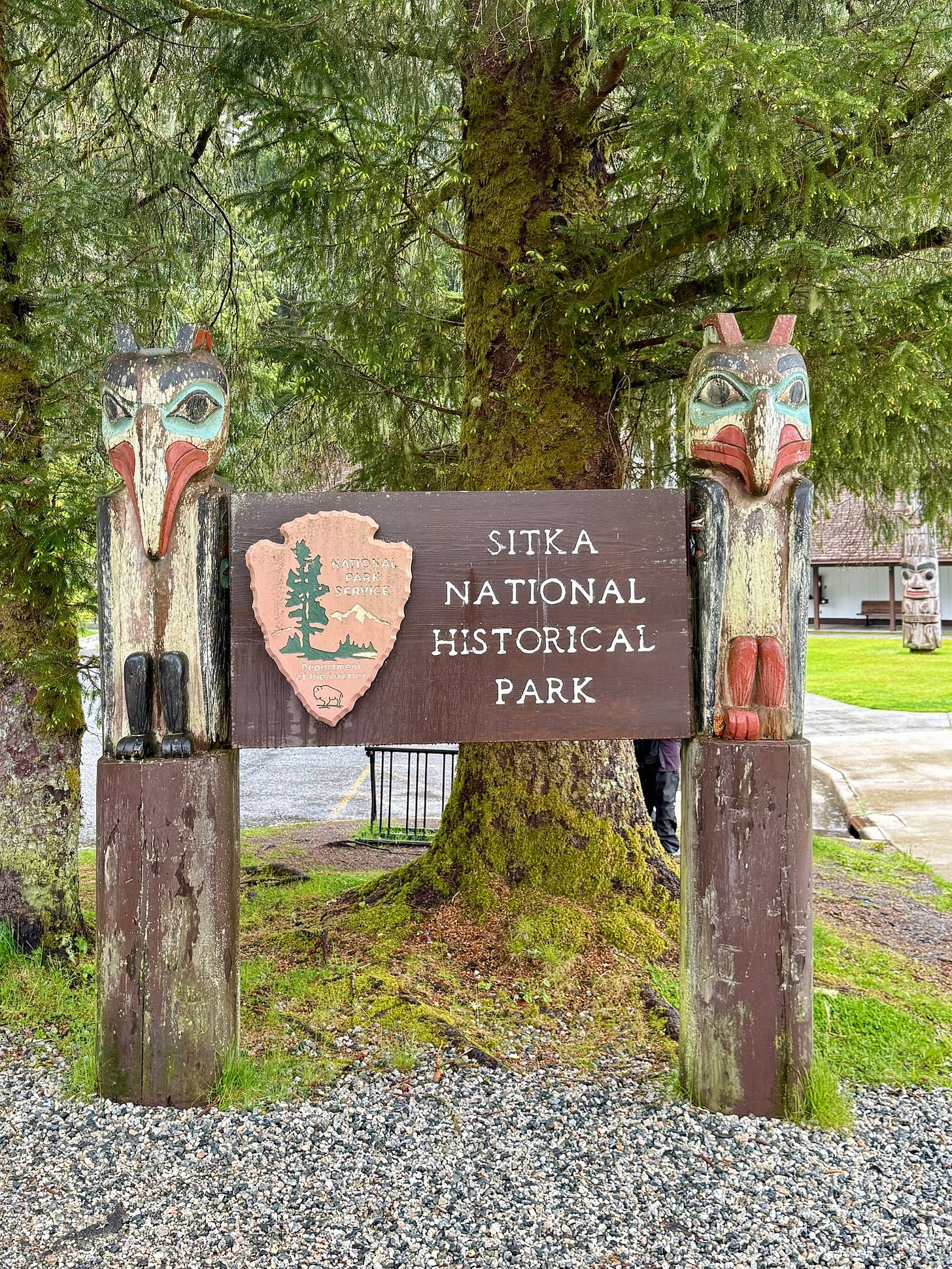

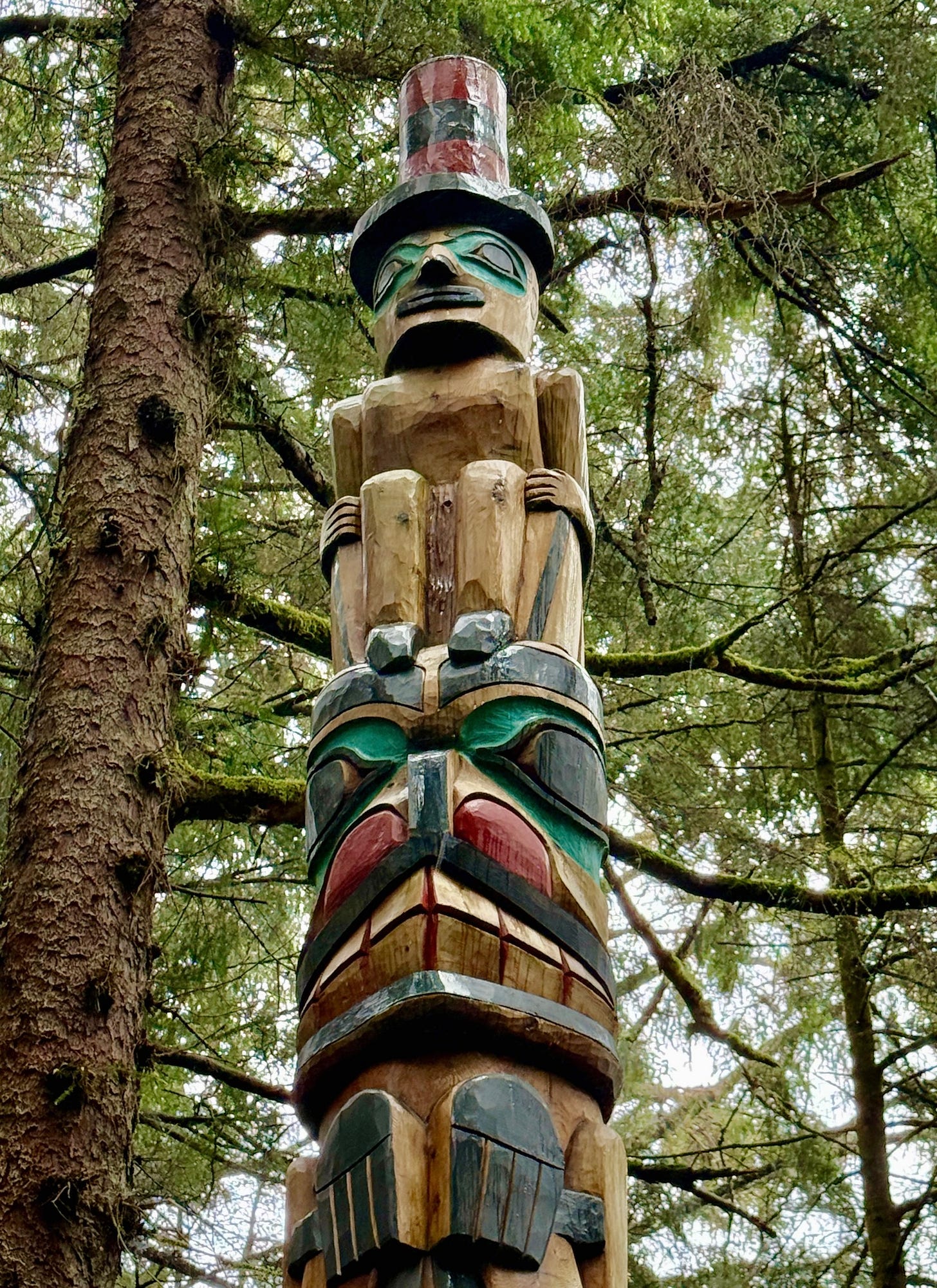
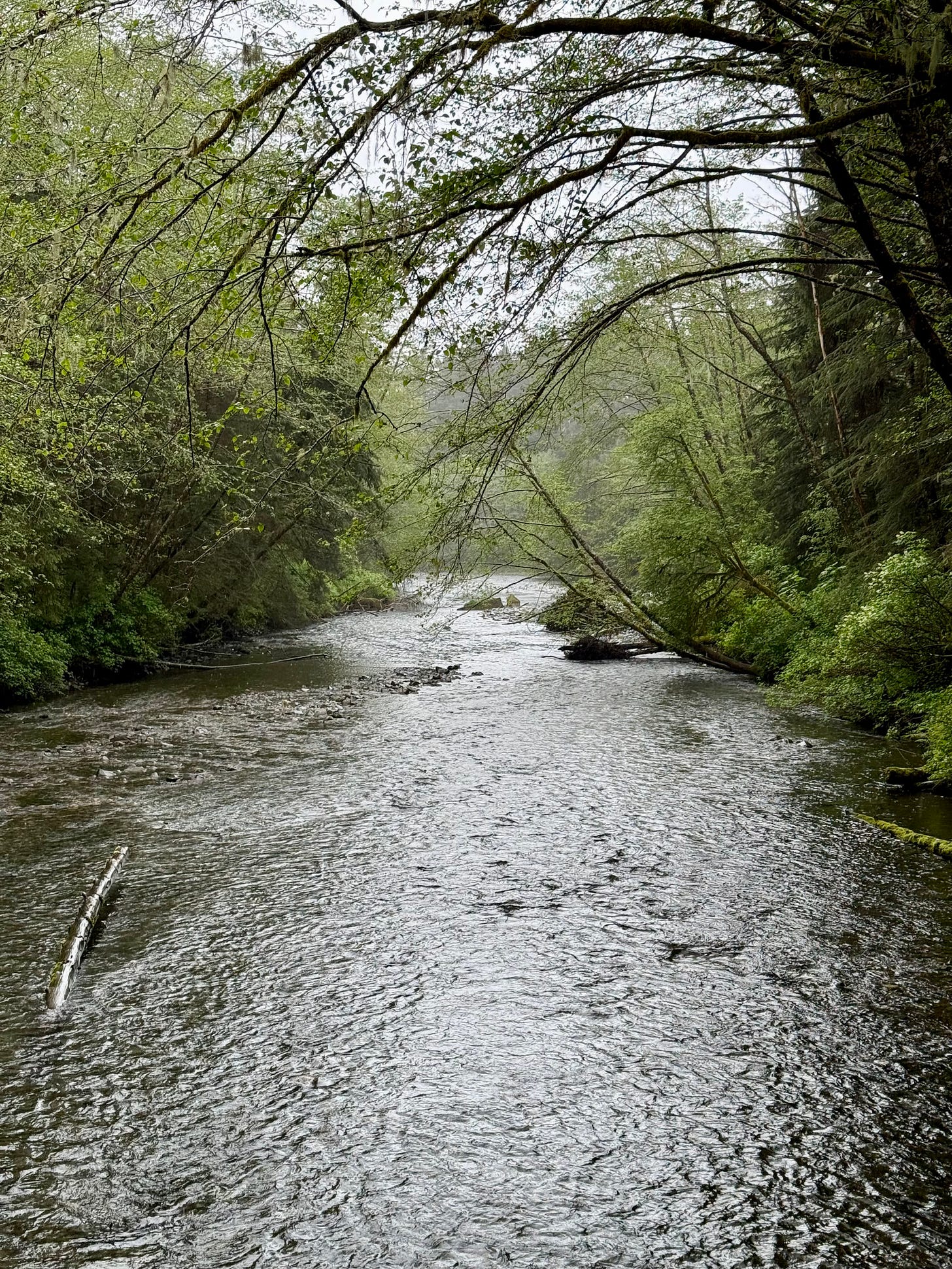

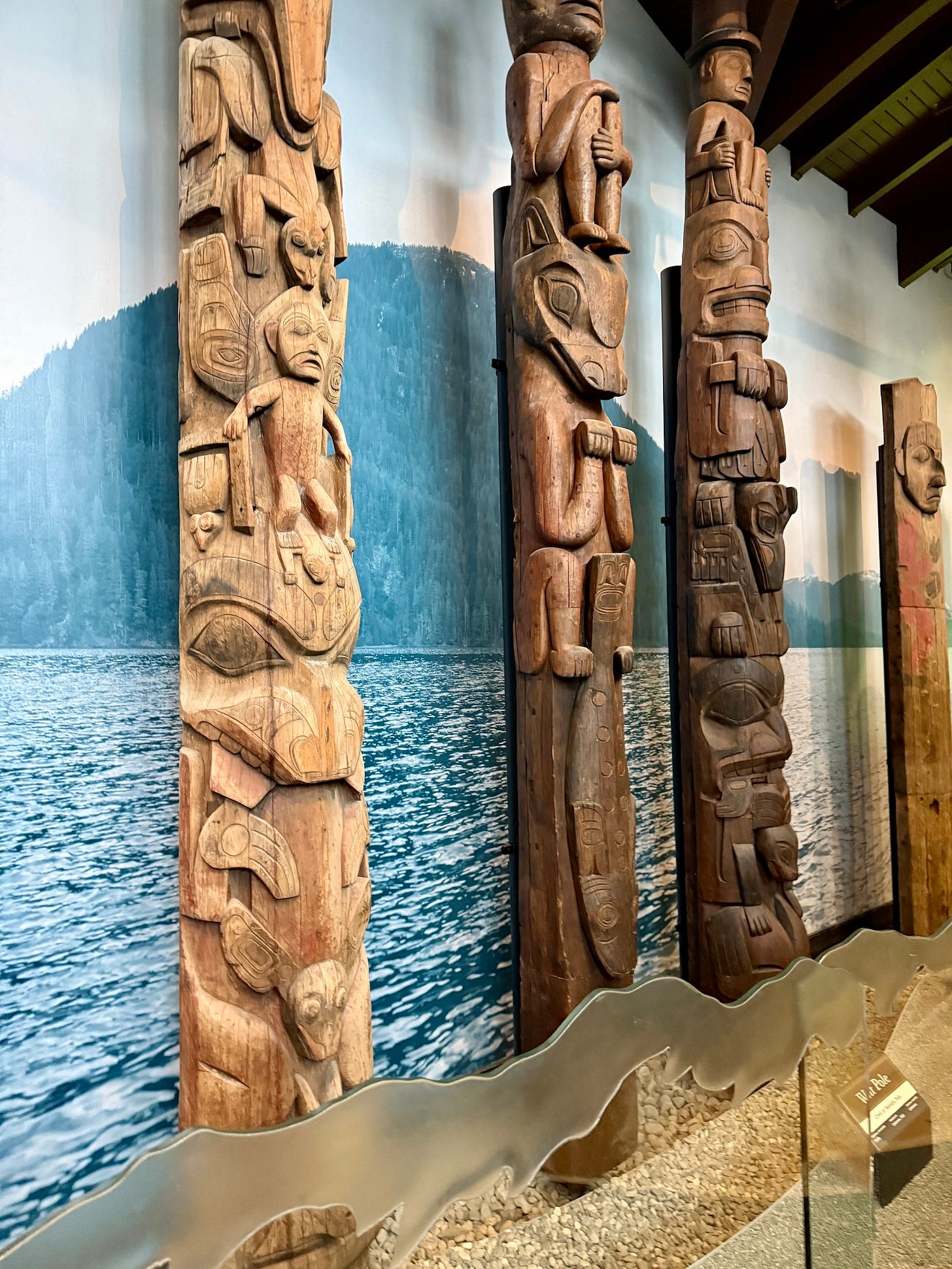
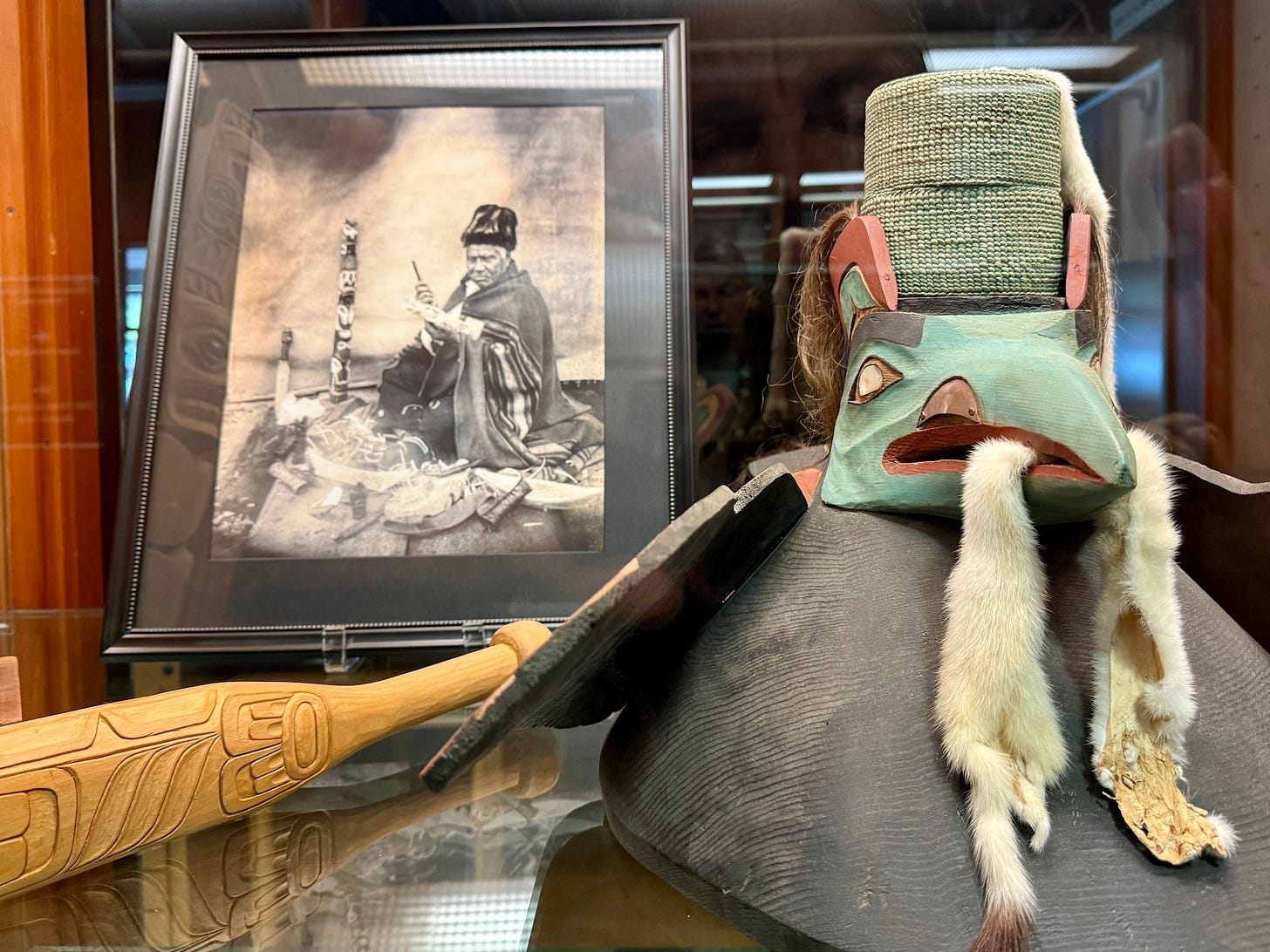
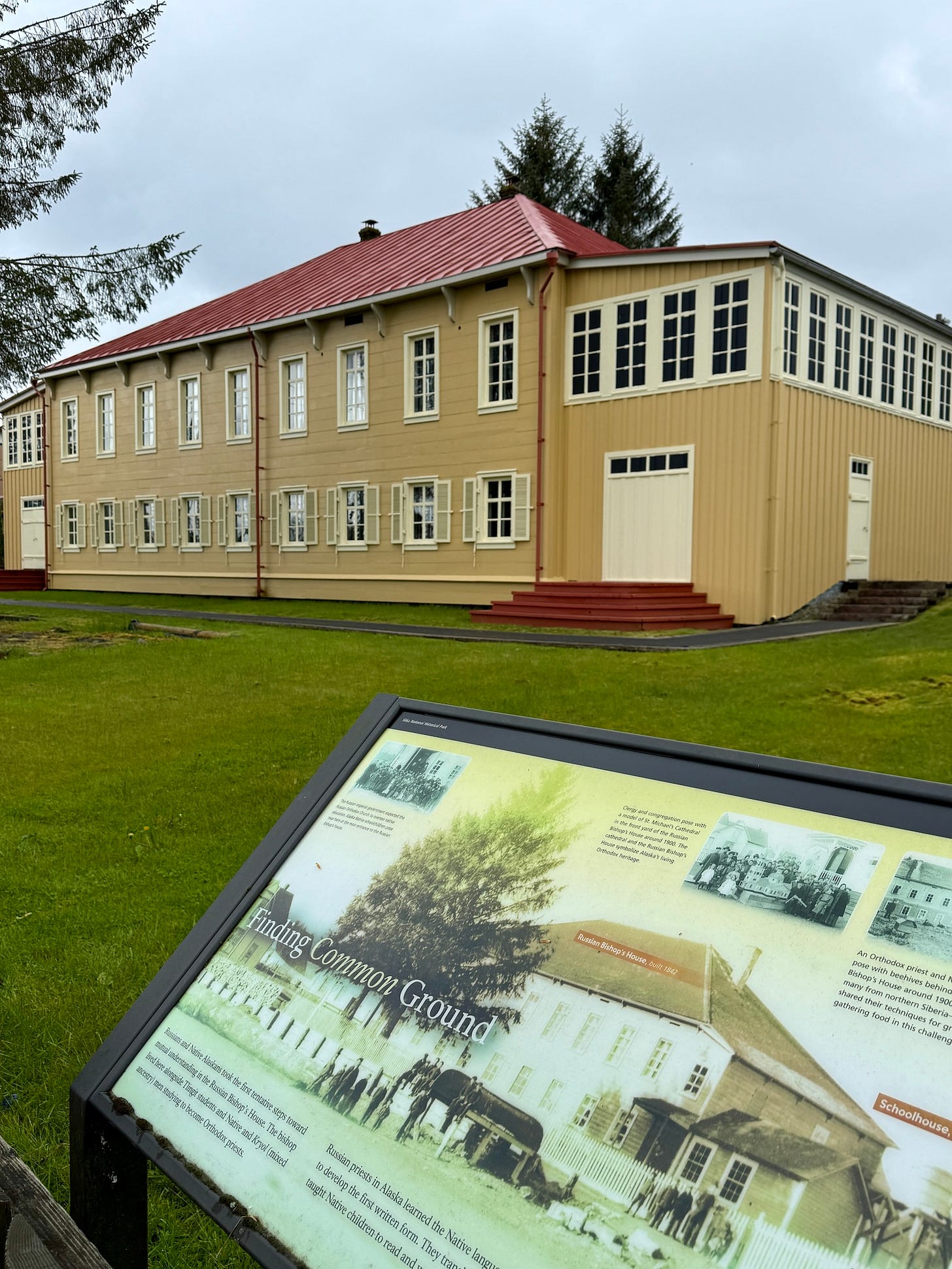
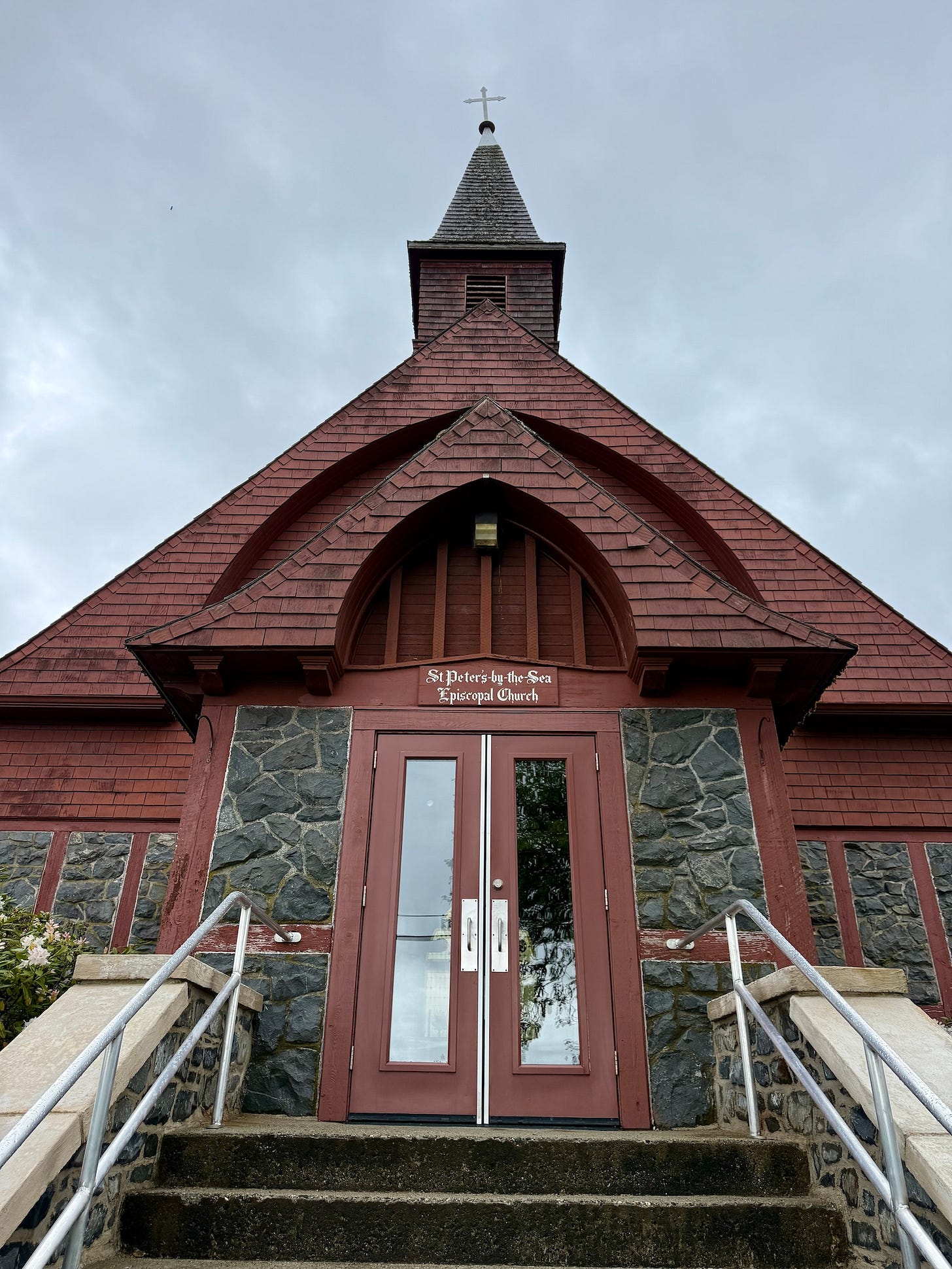
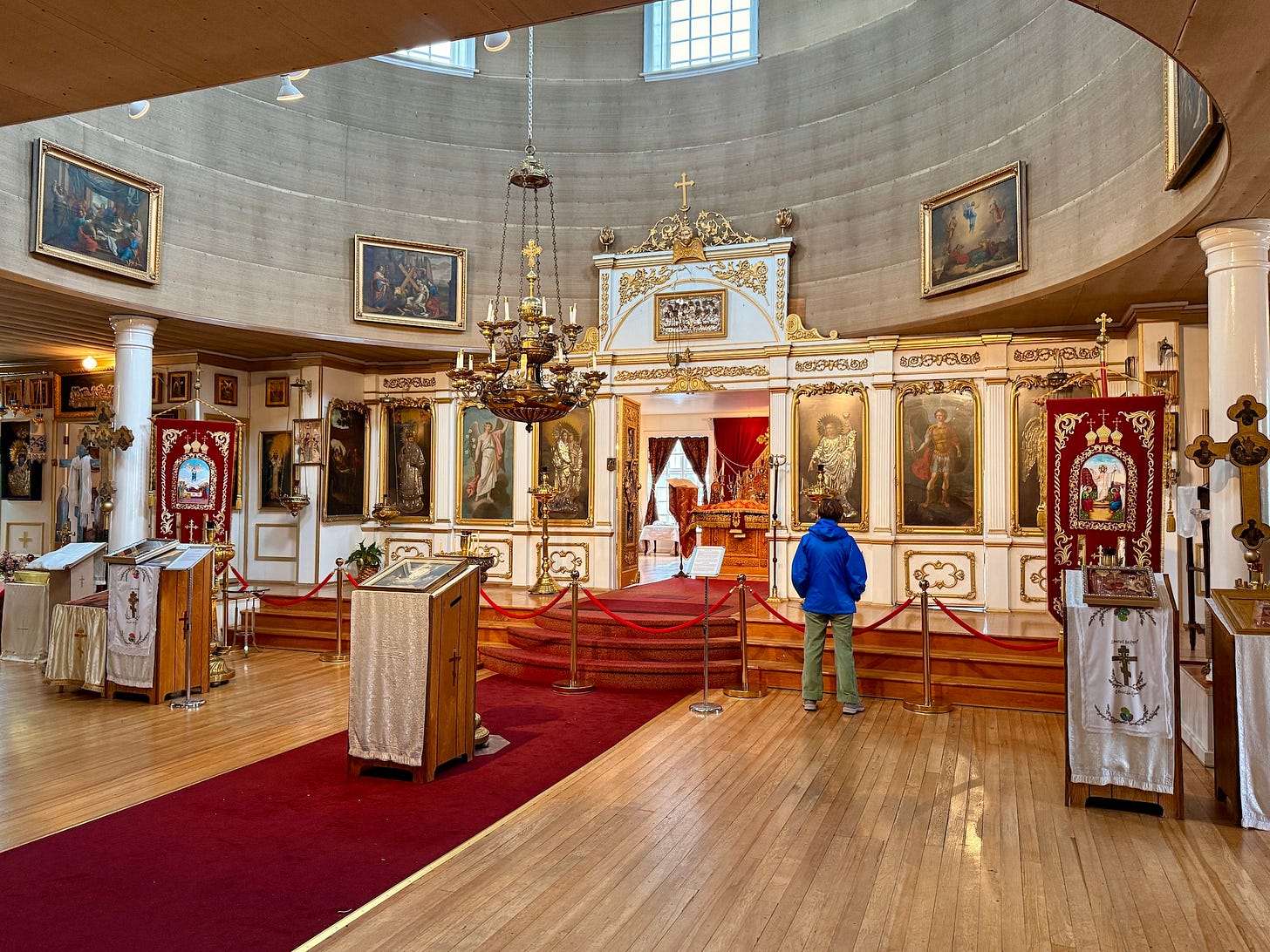
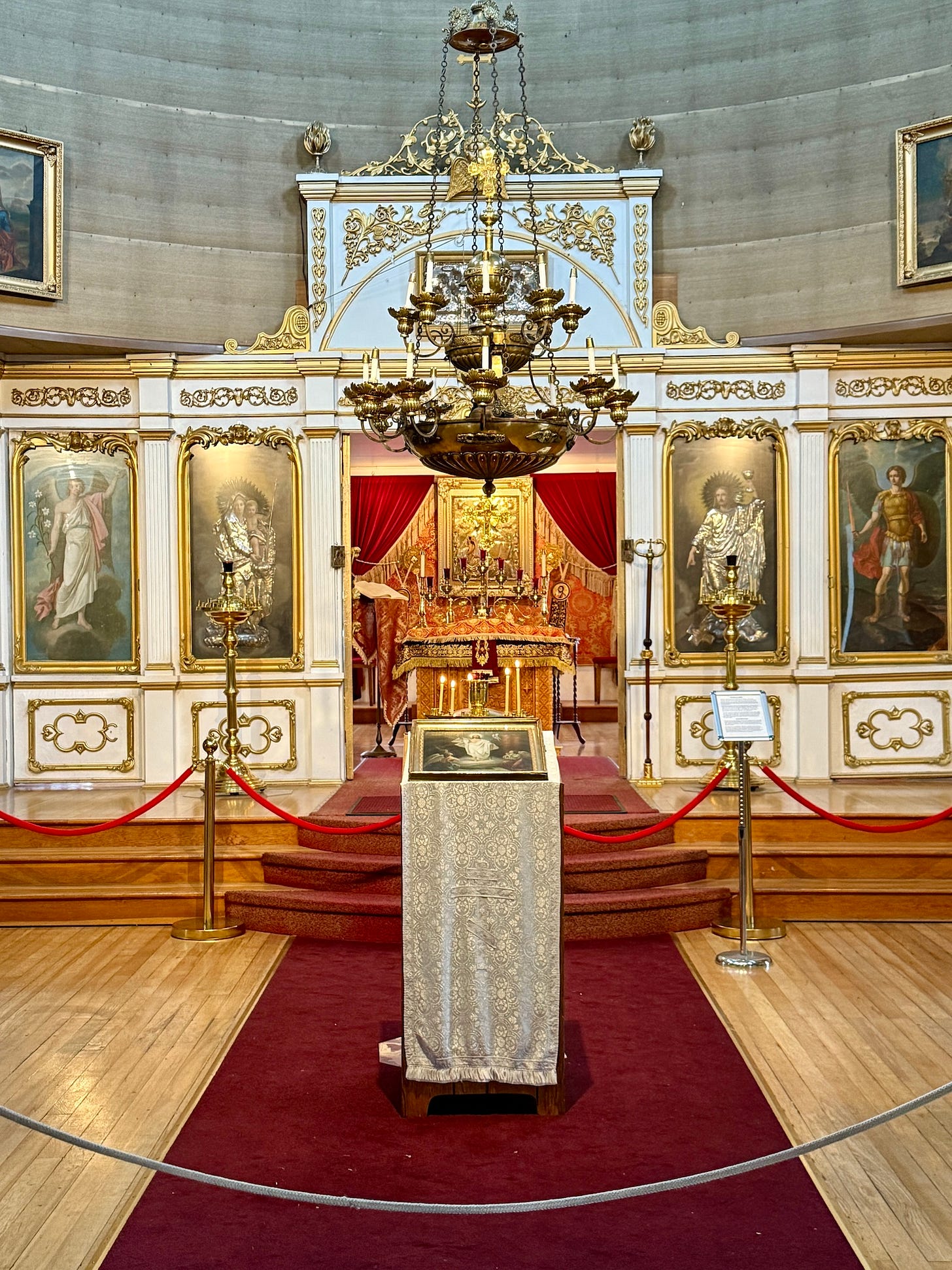
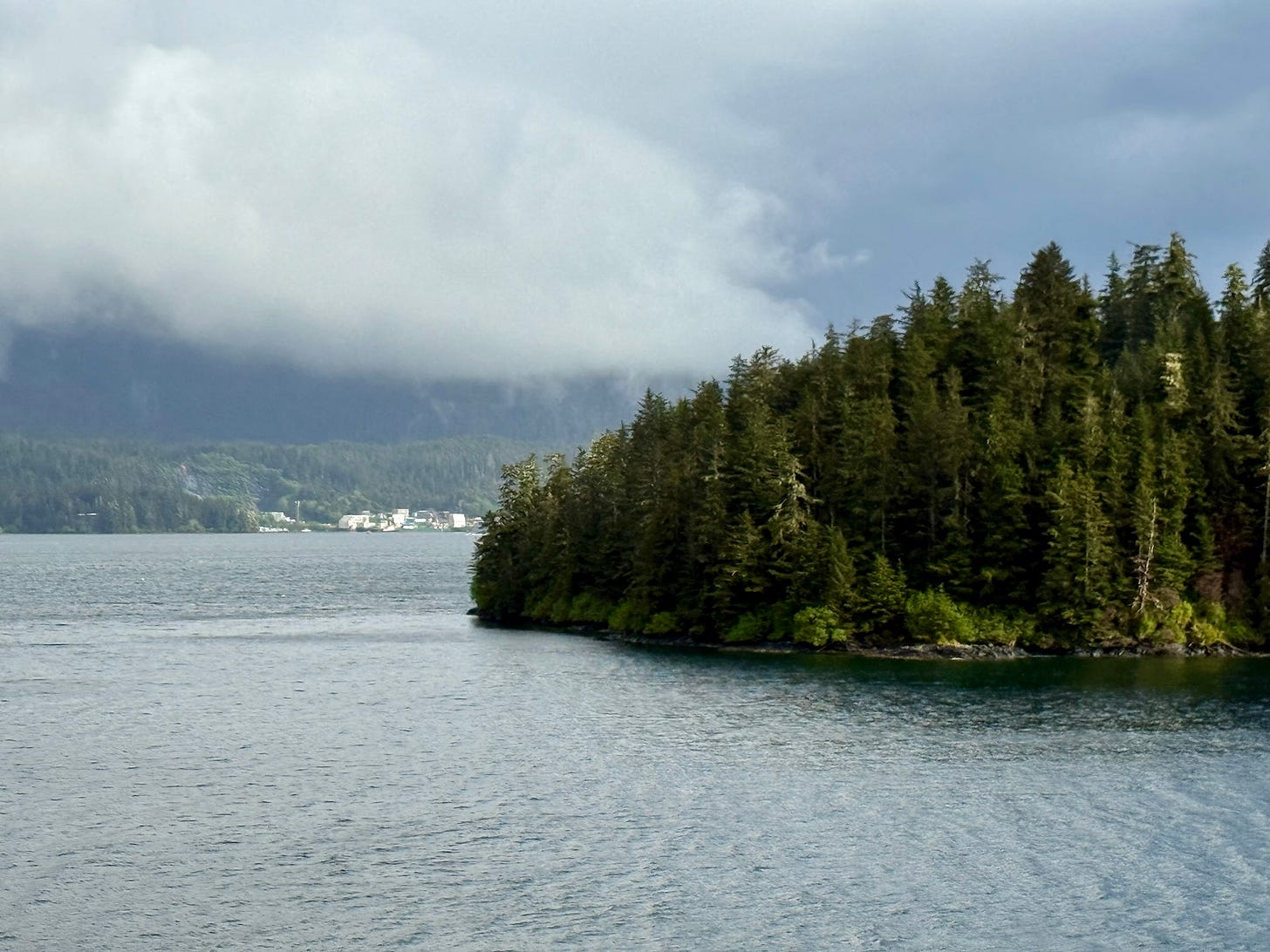
So fun to have another chance to explore somewhere you have enjoyed before!! Seems like a great day of reminiscing and new experiences!
Sitka is one of our favorite ports as well!